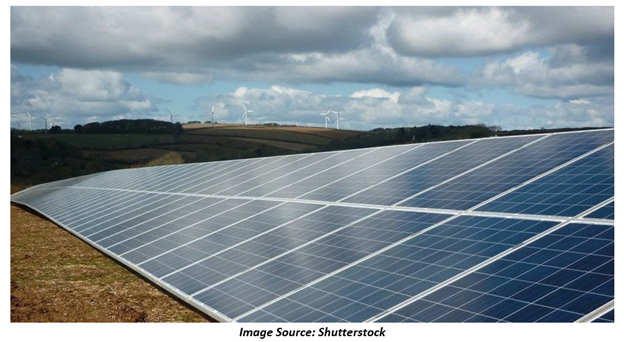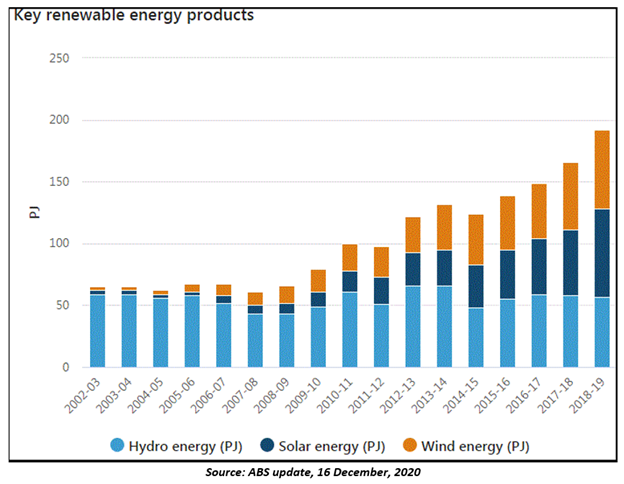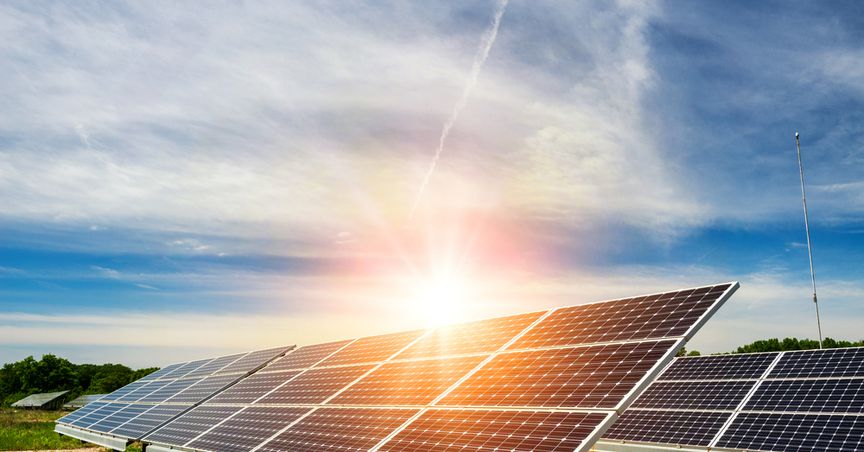Summary
- Supply of renewable energy used for electricity prediction has shown an uptick for the period 2018-19, as per latest ABS statistics.
- Energy use per household and aggregate industry intensity has continued to fall during 2018-19.
- LNG export volumes surged to 4,094 PJ, surpassing uranium as the second largest Australian energy export.
With solar and wind energy showing robust growth, supply of renewable energy used for electricity prediction is found to show an increase during 2018-19, according to latest ABS update.
For the first time on record, wind energy surpassed hydro energy, according to the latest edition of the annual Energy Account released on Wednesday by the Australian Bureau of Statistics (ABS). This is attributable to large scale wind energy and solar energy coming online.

Keeping in line with earlier years, the energy use per household and aggregate industry intensity has continued to fall during the period 2018-19. While the energy use per household fell 2.2 per cent to 130.6 GJ/ Household, industry energy intensity decreased 1.4 per cent to 1,600.4 GJ/ GVA.

In 2018-19, the total energy usage (in real terms) in households decreased by 7 PJs. Notably, A single PJ can electrify 47,000 Australian homes for 12 months.
READ MORE: Eye on net-zero emissions target, Australia shells out $100 million on renewables
LNG exports surpass uranium
Liquefied Natural Gas (LNG) exports continued to grow strongly, according to energy export data. The LNG export volumes reportedly surged to 4,094 PJs in 2019, up 21 per cent from previous year. LNG exports thereby surpassed uranium as the second largest Australian energy export.
Energy exports for uranium were down 6.7 per cent to 3,558 PJ. While Black coal exports were up 3.4 per cent to 11,131 PJ.
Energy stocks mostly showed an increase during 2019-2020
During 2019-2020, black coal stocks rose 8 per cent to 2,675,700 PJ, while the uranium stocks were up 3 per cent to 775,208 PJ. Similarly, natural gas stocks were up 6 per cent to 140,483 PJ, while crude oil stocks were down 3 per cent to 4,414 PJ.
READ MORE: Tilt Renewables (ASX:TLT) seals deal with Newcrest for electricity, green product supply
In basic prices, the supply of energy products was valued at A$239,217 million.
- Value of domestic supply (84 per cent) stood at A$200,623 million.
- Value of imports (16 per cent) stood at A$38,594 million.
NOTE: The survey defines energy intensity as the ratio of energy consumed (GJ) per unit of economic output (GVA).




